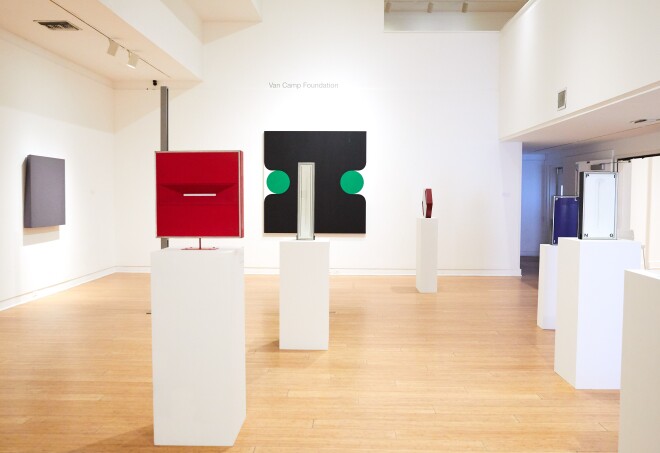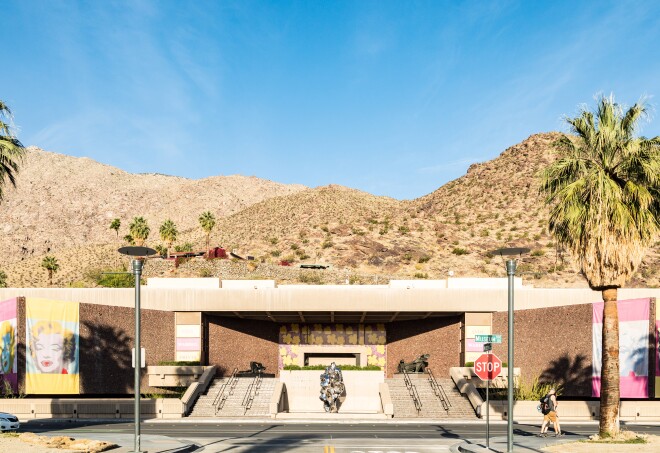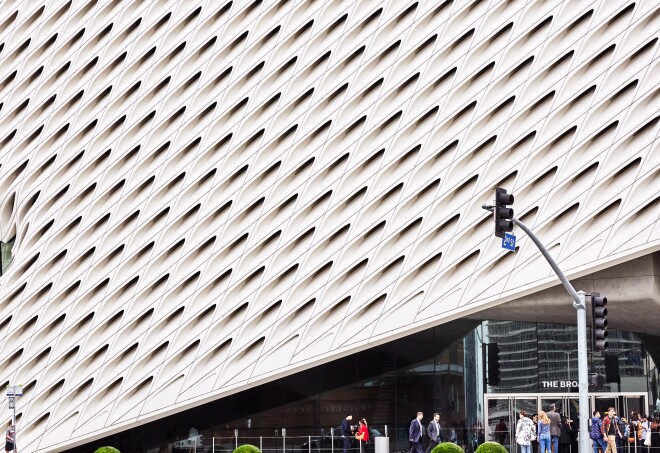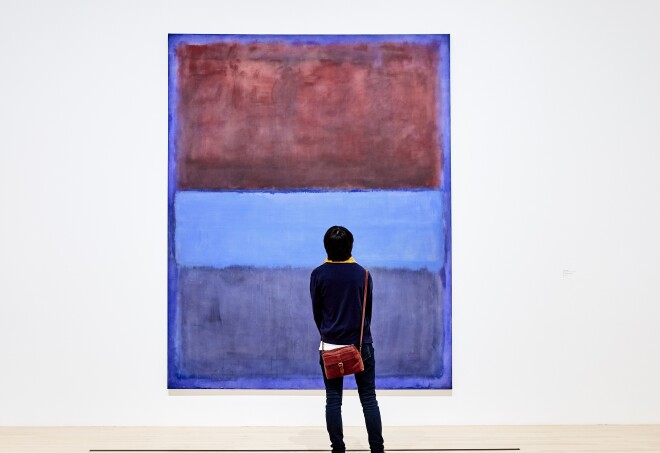Balboa Park, San Diego, CA, USA
A 1,200-acre green space filled with museums, theaters, and gardens, Balboa Park is the center of art and culture in San Diego. It’s also one of the city’s most historic sites, built for the Panama–California exhibition in 1915. While the museums are definitely worth seeing, there are also a number of free attractions, including the photogenic Botanical Building, which houses more than 2,100 plants (including Venus flytraps); the Desert Garden, filled with succulents from around the world; and a sculpture court with works by Miró and Rodin. For one of the area’s best views, purchase a timed ticket to climb the California Tower in the Museum of Man. The ornate structure reopened to the public in 2015 after being closed for nearly 80 years and features a spiral staircase to the eighth floor, where you can catch a glimpse of the Cuyamaca Mountains, the Cabrillo Bridge, and even Mexico’s Coronado Islands.
307 Cliff Dr, Laguna Beach, CA 92651, USA
Laguna Beach’s deep connection to the arts goes back to 1918, when 150 local creative residents started the Laguna Beach Art Association (the city’s population was only 300 then). That association went on to launch what’s now the Laguna Art Museum. Although the museum covers countless genres and eras, there’s one thing every piece has in common: They’re all made in California. The 3,500-strong permanent collection spans the early 19th century to present day, from light and space installations to pop art (and also includes pieces by art-world stars like Ed Ruscha and Wayne Thiebaud). It’s rounded out by a handful of new California-centric exhibitions each year. Highly knowledgeable docents—all have completed an extensive nine-month training course—lead lively one-hour walk-throughs at 11 a.m. Friday to Tuesday; groups of 10 or more guests may book guided tours in advance. Must-do: Hit the museum on a Thursday night when it stays open until 9 p.m. and becomes a community hub, with lectures, film screenings, and live concerts in the galleries.
62975 Blair Lane
Throughout his life, African-American artist Noah Purifoy reimagined junk as art, using found materials to create sculptures inspired by Southern California’s culture and landscape. Some of his best-known pieces were made out of charred debris from the 1965 Watts riot, and he worked tirelessly to bring art programs into the local community and prison system. Then in the late 1980s, Purifoy moved to the desert, where he spent the last 15 years of his life creating his original and distinctive magnum opus: a series of large-scale sculptures sprawled across 10 acres of sandy red earth in the Mojave. The space redefines the notion of a museum, with an atmosphere that’s both meditative and reminiscent of Mad Max. While the found items are evident upon close inspection, the impact of the pieces themselves—with such titles as “The White House,” “Band Wagon,” and “Ode to Frank Gehry”—is deeply moving. The museum is open all day and free (though donations are encouraged), but you can also schedule a one-hour group tour or a private tour with a docent. Pro tips: Visit as early as possible or at sundown to avoid the scorching heat and experience the place at its most picturesque. Bring water and watch out for snakes.
101 N Museum Dr, Palm Springs, CA 92262, USA
It’s a sign of the Palm Springs boom that what started as a modest local museum is now a premier destination for art and design aficionados. Today, the establishment, first opened in 1938, celebrates performing arts, modern art, and architecture in three locations. The main building, a designated historic site designed by architect E. Stewart Williams, is the most trafficked, with works by Henry Moore, Ed Ruscha, Dale Chihuly, and other marquee names. The Palm Springs Art Museum in the Palm Desert location features a rotating selection of exhibits by contemporary artists, as well as a sculpture garden where you can have a contemplative afternoon picnic. The Architecture and Design Center, in a structure originally designed by Williams, hosts exhibitions on architecture and design that change twice a year, rounding out an extensive permanent collection that includes works by Julius Shulman, Alexander Calder, David Hockney, and Marc Chagall. Pro tip: The museum buzzes with energy, particularly on free Thursday evenings, but for a more tailored experience focused on a particular theme, take one of the tours led by passionate and knowledgeable docents.
221 S Grand Ave, Los Angeles, CA 90012
When it opened in 2015, this museum drew headlines for its extensive contemporary art collection and Diller Scofidio + Renfro–designed building, which resembles a futuristic honeycomb. Then a single exhibition catapulted it into fame: artist Yayoi Kusama’s installation of thousands of twinkling LED lights called Infinity Mirrored Room—The Souls of Millions of Light Years Away. (The artist’s follow-up, Longing for Eternity, opened in 2017.)
There’s plenty to be dazzled by in this museum founded by philanthropists Eli and Edythe Broad. Hundreds of skylights illuminate the column-free third floor’s permanent galleries—featuring the Broads’ considerable collection of pieces by Kara Walker, Barbara Kruger, Jasper Johns, and Jean-Michel Basquiat. Insiders know to visit on weekdays for the most relaxed experience or around major holidays and occasions such as Halloween and International Women’s Day for engaging and sometimes provocative tours. Pro tip:
Though general admission tickets are free, it’s wise to book tickets online ahead when they’re released on the first of each month for the following month, especially if you’re taking a date or going with a group (the same goes for Kusama’s rooms). At least two weeks out, request a before- or after-hours guided group tour of one hour, not including the Infinity Mirrored Room.
And make sure to also book reservations at Otium, the trendsetting restaurant by Chef Timothy Hollingsworth located next to the Broad.
There’s plenty to be dazzled by in this museum founded by philanthropists Eli and Edythe Broad. Hundreds of skylights illuminate the column-free third floor’s permanent galleries—featuring the Broads’ considerable collection of pieces by Kara Walker, Barbara Kruger, Jasper Johns, and Jean-Michel Basquiat. Insiders know to visit on weekdays for the most relaxed experience or around major holidays and occasions such as Halloween and International Women’s Day for engaging and sometimes provocative tours. Pro tip:
Though general admission tickets are free, it’s wise to book tickets online ahead when they’re released on the first of each month for the following month, especially if you’re taking a date or going with a group (the same goes for Kusama’s rooms). At least two weeks out, request a before- or after-hours guided group tour of one hour, not including the Infinity Mirrored Room.
And make sure to also book reservations at Otium, the trendsetting restaurant by Chef Timothy Hollingsworth located next to the Broad.
17985 Pacific Coast Hwy, Pacific Palisades, CA 90272
J. Paul Getty’s original museum is as much about the transporting setting as it is about the pieces inside. When the billionaire oil tycoon decided to open a museum for his extensive collection of antiquities in 1974, he modeled it after an ancient Roman villa that had been buried by the eruption of Mount Vesuvius. The estate’s painted ceilings, Roman columns, and marble floors feel at one with the 44,000-strong collection of Etruscan, Greek, and Roman pieces (don’t miss the bronze statue of Herakles, circa 300 B.C.E.). When you stand amid the 64-acre ground’s bronze statues, frescoes, and reflecting pool, the expansive view of the Pacific Ocean offers one of the few clues that you’re in California. A regular stream of theater performances, readings, and academic talks in the open-air amphitheater keeps things heady day and night. Pro tip: Although it’s free, entrance to the Getty Villa requires an advance, timed-entry ticket, bookable online. Don’t miss the 40-minute tours on Thursdays and Saturdays of the four Roman gardens, which cover a fascinating array of mythology and history.
5905 Wilshire Blvd, Los Angeles, CA 90036, USA
Encyclopedic is one way to describe L.A.’s oldest art institution. Sprawling is another. The Los Angeles County Museum of Art opened in its current Miracle Mile location in 1965 and has not stopped growing, becoming the largest museum in the western United States. Its 135,000-piece collection spans 6,000 years of art. It also includes some of the museum world’s most photographed outdoor sculptures, such as Michael Heizer’s mind-boggling Levitated Mass and Chris Burden’s Urban Light. The museum hosts some 40 exhibits per year, plus a dynamic schedule of events, such as Tuesday film matinees and picnic-friendly Jazz at LACMA (held weekly on “summer” weekend nights—which in L.A. means April to November). While anyone can join free tours throughout the day, docents also lead customized experiences for a fee, which will take you through the galleries before or after hours to marvel at artists as wide-ranging as Henri Matisse, Ai Weiwei, Diego Rivera, and Catherine Opie. Kids are also catered to with a special gallery, Sunday activities, and a free membership, which includes entry for them plus an adult guest any day of the year. Pro tips: Plan to spend several hours at the museum, fueling up on wood-fired pizza midway through the day at Ray’s & Stark Bar. And if you’d like to experience the outdoor sculptures without the crowds, go early in the morning or on Wednesdays, when the museum is closed and gloriously quiet.
250 S Grand Ave, Los Angeles, CA 90012, USA
Founded in 1979, the mission of this institution is clear—it’s committed to preserving, presenting, and interpreting art created after 1940. Its methods, however, are ever changing. Three distinct venues in the city shine a spotlight on forward-thinking artists of the 20th and 21st centuries. Start at the Grand Avenue location, arriving right at the 11 a.m. opening for a chance to contemplate Mark Rothko’s emotional color studies in peace. After exploring work by such artists as Robert Rauschenberg, Joan Miró, and Nijideka Akunyili Crosby (who created the mural that wraps around the building), grab lunch from Lemonade café to enjoy in the Sculpture Plaza. One mile away, the same general admission ticket gets you entry to the Geffen Contemporary at MOCA, which opened in Little Tokyo in 1983 after a renovation of a former police car warehouse by Frank Gehry; today, it hosts the museum’s more experimental exhibits. Architecture aficionados should also visit the third location, the MOCA Pacific Design Center, about 10 miles away in West Hollywood. (A fourth MOCA location, called Double Negative, requires much more of a detour—it’s a work of land art by Michael Heizer in the middle of the Nevada desert.) Art talks, screenings, and live music alongside food trucks make MOCA Grand and Geffen as much social venues as they are cultural ones. Pro tip: For an in-depth look at the collections, book the completely customizable educator-led tour (request a couple weeks ahead). For a livelier experience, visit on a Thursday from 5 to 8 p.m., when admission is free.
750 Hearst Castle Rd, San Simeon, CA 93452, USA
This sprawling, 165-room mansion may be known as Hearst Castle, but officially, it’s called La Cuesta Encantada (“The Enchanted Hill”), former owner William Randolph Hearst’s affectionate name for the property. Designed by legendary California architect Julia Morgan to the newspaper magnate’s specifications, Hearst Castle was considered completed in 1947, even though it was still unfinished. Now a national historic landmark and museum dedicated to art and excess, it’s filled with Egyptian, Greek, and Roman antiquities, along with Old Master European artwork, Chinese and Near Eastern art, and art deco items—25,000 artifacts in all. There’s always something blooming in the 127 acres of gardens, whether it’s sweet-smelling hyacinth, walls of magenta bougainvillea, fragrant star jasmine, or orange California poppies (the state flower). Don’t get overwhelmed by the numbers during a visit here. Most tours of the estate focus on certain areas, instead of the entire grounds. Pro tip: The Hearst Castle private tour, a four-hour, in-depth exploration of the lavish grounds and mansion, is well worth it. The customized route can access any areas of the estate that are available to the public, but since it’s limited to a maximum of six guests, you can cover a lot of ground with your private guide and get information that shorter tours can only touch upon.
55 Music Concourse Dr, San Francisco, CA 94118, USA
The California Academy of Sciences is an unfortunately stuffy name for an institution that is anything but staid. The country’s largest natural-history museum includes an aquarium, a planetarium, an enormous rain-forest exhibit under a 27-meter-tall (90-foot-tall) dome, and a living roof that looks like a science-fiction fantasy. A visit here can feel like a trip to an amusement park, with a series of attractions to check out, but all of them are educational. The building itself is part of the appeal of the Academy. (Like the nearby de Young, the old home of the California Academy of Sciences was damaged in the 1989 Loma Prieta earthquake, and starchitect Renzo Piano designed its very environmentally friendly replacement.) It would be easy to spend an entire day or more seeing all of the Academy’s exhibits, so be prepared to pick and choose among them.
151 3rd St, San Francisco, CA 94103, USA
It had been a long wait for modern art lovers, but after a three-year closure and a $305 million renovation and expansion, the San Francisco Museum of Modern Art (SFMOMA) reopened in May 2016, and was it ever worth the wait. A new 10-story addition from the renowned Norwegian design firm Snøhetta integrates seamlessly with the existing black-and-white-striped atrium tower, giving San Francisco‘s SoMa neighborhood some serious eye-candy. It’s also now the largest modern and contemporary art museum in America, with nearly triple its previous gallery space. New to the already impressive collection are selected works from the esteemed Doris and Donald Fisher Collection, featuring significant American and European artists of the 20th and 21st centuries such as Andy Warhol, Ellsworth Kelly, Alexander Calder, Georg Baselitz, Barbara Hepworth, and Henry Moore, among many others. Gifts of painting, sculpture, drawings, media arts, and architecture made to the museum since 2009 also rotate through various galleries, while the entire third floor is dedicated to the Pritzker Center for Photography. Visitors take a breather in the tranquil sculpture garden with enormous living wall, or in the fifth floor Cafe 5. Along with offering free entry to visitors 18 years old and under, SFMOMA invites you to try In Situ, the museum’s signature 150-seat lounge and restaurant, helmed by Michelin-star chef Corey Lee, with a menu of dishes culled from the recipes of some 80 chefs from around the world.
2301 Hardies Ln, Santa Rosa, CA 95403, USA
Peanuts characters are alive and well at this Santa Rosa institution, which celebrates the life and legacy of Snoopy creator Charles M. Schulz. The museum was founded in 2002 by Jean Schulz, the cartoonist’s widow, and today it houses the largest collection of original Peanuts artwork in the world. Permanent exhibits include a look at some of Schulz’s original comic strips, as well as a recreation of his art studio. There’s also a tile mural composed of 3,588 different comic strips. Temporary exhibits change throughout the year. The museum also has an outdoor area with sculptures that depict iconic moments from the cartoons (such as Charlie Brown with a metal kite stuck in a real tree) and a theater that screens documentaries on a loop. If you’re traveling with children, the best part of the museum is the laid-back-but-hands-on education room, where docents help visitors learn how to draw specific characters. Also worth exploring with kids: the Redwood Empire Ice Rink, located across the street. Schulz loved skating at the rink, which is open to the public. Skate rentals are available, and a café serves breakfast and lunch daily.





















